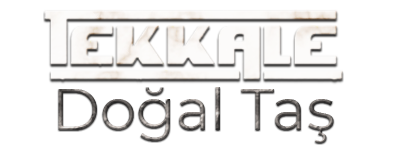It impacts your website’s visibility on search engines and the user experience on your site. On-page SEO includes all activities that help optimize a single web page. The goal is to improve its visibility and keyword ranking on search engine results pages. The review of these metrics will provide you with a bigger picture of your site’s overall performance. You’ll likely discover the main problems that prevent your website from the stable growth of its search engine rankings. Using this information, you can more accurately plan your SEO strategy to ensure a smooth workflow during its implementation.
However, search engine optimization (SEO) techniques and best practices do more than increase your visibility on search engine result pages (SERPs). Proper SEO implementation can increase foot traffic to local shops and deliver seamless mobile experiences. It dynamically creates them from your content based on the query—which is why it’s important to have those heading tags in there. Keep in mind also that the meta description also appears in preview snippets, like the ones you see on social media. While the overlapping circles look nice, they’re presented that way because these efforts are all interconnected.
On Page SEO Optimization Definition, Importance and Strategies
Add external links within your content, not at the end of the sentence. If you’re writing an article about “the best way to brew coffee”, don’t just add a link to a site with the anchor text of “learn more about brewing coffee here“. Outbound links from your site also impact the quality of your content and pages in Google’s eyes.
So after running a site crawl, compare the URLs you have mapped SEO Anomaly out with those listed in your XML sitemap. Follow the checklist provided in this article, starting with SEO page analysis and ending with mobile friendliness. Off-Page SEO refers to actions taken outside of your website to impact your rankings within search engine results pages.
SEO statistics on voice search and other emerging technologies
There are many tools, free and paid, that you can use to test the loading speed of a specific page on your site. Google’s PageSpeed Insights tool is a good one for quick tests. If it’s a solid block of dry, boring text on a topic that only a small handful of people will understand or find interesting, it won’t get any traction. You want your headings to introduce what the next section of content is about. The more specific you get, the more specific the heading tags should be. In general, Google wants to show users the highest quality and most trustworthy content at the top.
Show your credentials, cite reputable sources, and make it easy for users to verify your information. By prioritizing E-E-A-T, you signal to search engines that your site is reliable and deserving of a higher ranking. When you link to reputable and relevant external sources, you show search engines and users that your content is well-supported and trustworthy.
The reason for this is that Google puts more emphasis on the keywords that show up within the first 100 words of your content. Dropping your main keyword within the first 100 words will help Google to understand what your content is about. But a keyword like “esports earnings” is definitely one you should be targeting since it’s got low competition and some really high search volume. Well, before thinking of where and how often to use keywords, you should start by doing keyword research in order to determine which keywords to use. If you’re going to go down the AI route, just bear in mind that – as with any type of content – it needs to be useful if it’s going to rank well. And if everyone uses the same AI content, it might still end up being duplicate content.
Check External Links
Similarly, if you run a service-based or platform-based business website, your focus content will be more informational. In that case, answer FAQs common questions, create listicles, and code them as part of your schema markups to get a featured snippet on Google. I use the AIOSEO Free Headline Analyzer to create optimized and catchy blog headlines. It gives an overall score to the headline based on the word balance, headline type and other ranking features. Conduct keyword research using SEOBoost’s Topic Reports to identify relevant keywords. For each heading, recognize what your audience is searching for.
- Titles and meta descriptions are some of the first things that search engines Googlebot and Bingbot look at to understand your page content.
- Some of those optimizations are visible on the page itself while others are behind the scenes.
- To build trust on your website, it’s important to include user reviews or testimonials on your product pages as a form of social proof.
- Luckily, SEOBoost gives you a detailed overview of what can be improved to improve the overall quality and relevancy of your content.
- Follow these tricks of the trade and before long your site will be showing up in search results and attracting lots of attention.
On-page SEO differs from off-page SEO, another term you’ll likely encounter when trying to boost your online rankings. On-page SEO refers to optimizations on your website, while off-page SEO refers to optimization actions outside your website. With Semrush, you get to analyze data, track rankings, and uncover valuable insights that can help you tailor your content and strategies more effectively. And don’t forget to use our free on-page SEO progress tracker and checklist to stay on top of your optimizations. But you don’t need to write an amazing description 100% of the time. This helps Google (and visually-impaired users) understand what each image is showing.
